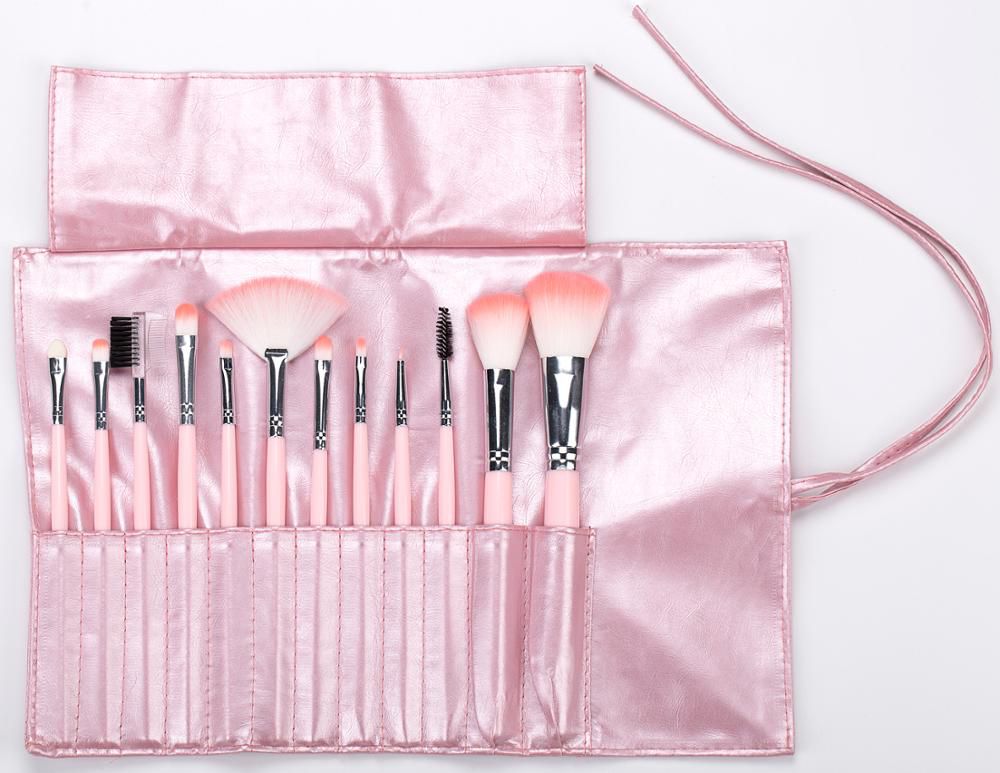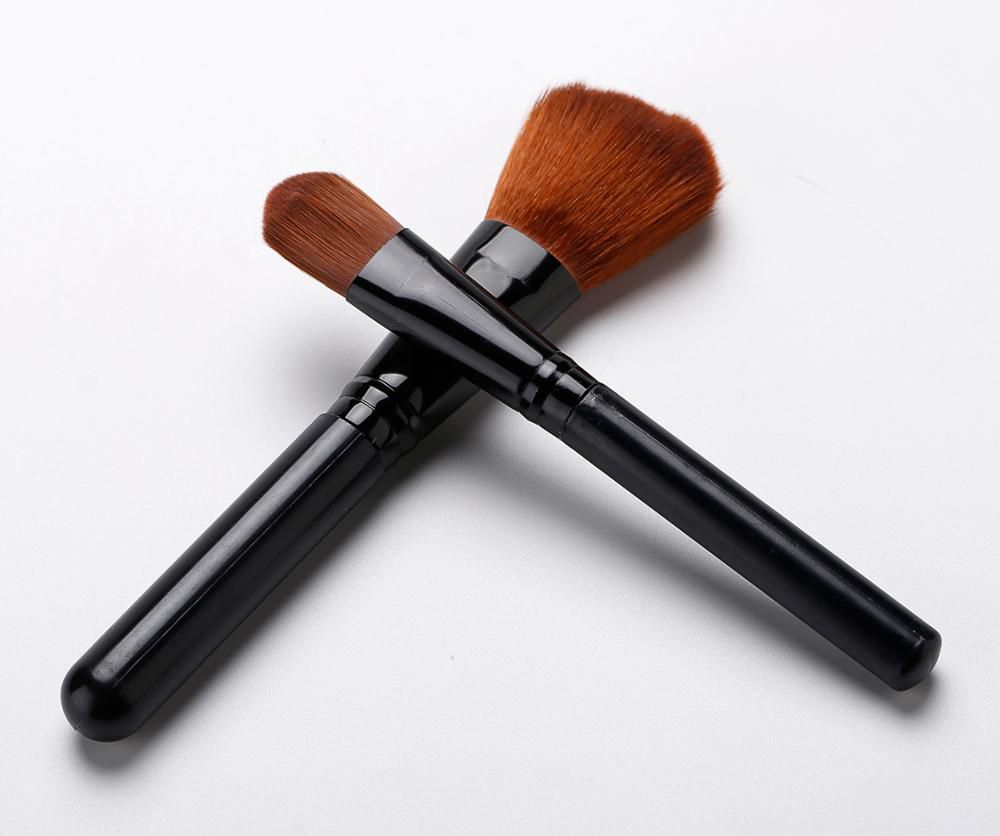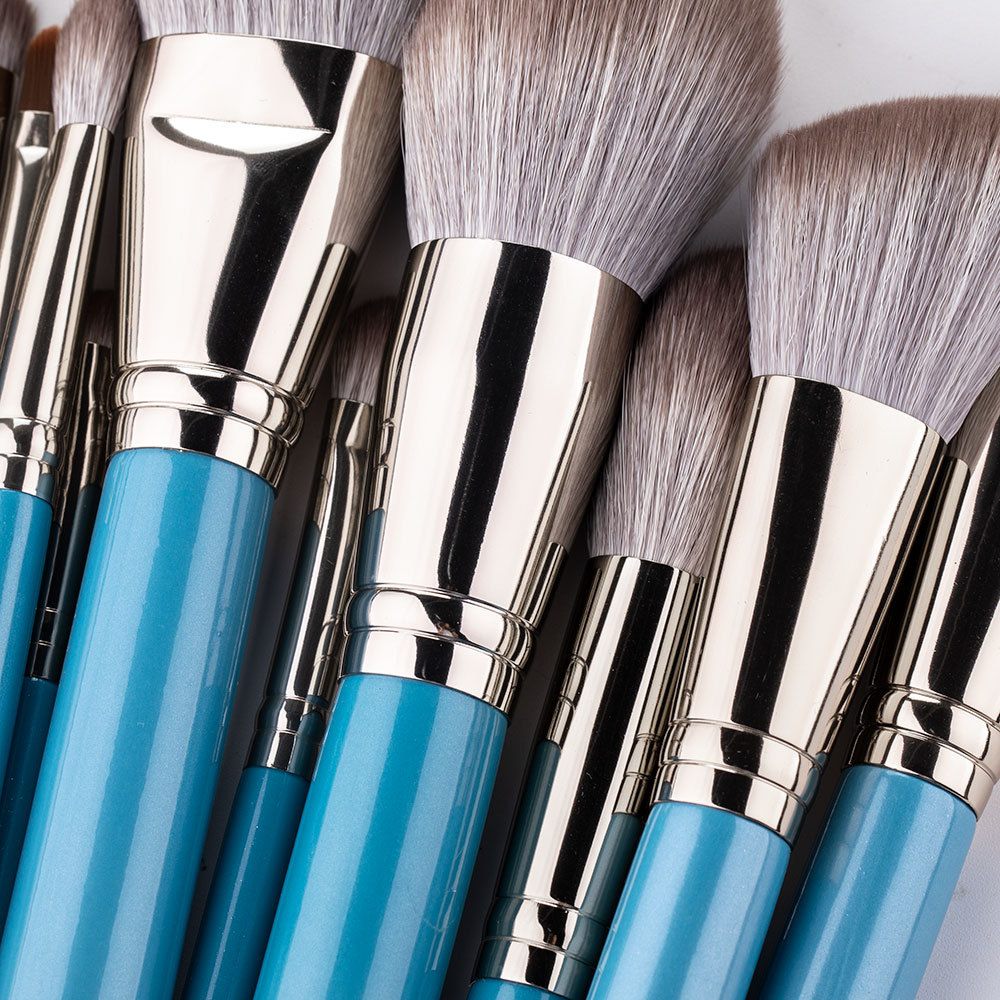Industry news
Bristle Geometry and Makeup Performance: A Comparative Study of Tapered vs. Flat Brush Shapes
- 401 Views
- 2025-07-06 01:32:07
Bristle Geometry and Makeup Performance: A Comparative Study of Tapered vs. Flat Brush Shapes
In the world of makeup tools, the geometry of brush bristles is often an unsung hero, quietly dictating the outcome of every application. Among the diverse brush shapes available, tapered and flat brushes stand out as two fundamental designs, each engineered to excel in specific tasks. This delves into their structural differences, performance characteristics, and practical applications, offering insights for both professional makeup artists and beauty enthusiasts.

The Science of Tapered Brushes: Precision in Gradation
Tapered brushes are defined by their conical silhouette, where bristles gradually narrow from the ferrule (the metal base) to the tip. This design is achieved by varying bristle diameters—typically thicker at the root for stability and thinner at the apex for delicacy. The result is a brush that balances flexibility with control, making it a favorite for soft, blended effects.

In terms of performance, tapered brushes excel in "feathering" product. When dipped into powders (e.g., eyeshadow, blush, or setting powder), the tapering allows for minimal, even pickup, reducing the risk of caking. The fine tip navigates tight spaces, such as the crease of the eyelid or the hollows of the cheekbones, while the broader base ensures seamless blending across larger areas. For instance, a tapered eyeshadow brush can effortlessly transition from a deep crease shade to a light brow bone highlight, creating dimension without harsh lines.
However, this precision comes with limitations. Tapered brushes are less efficient for large-area coverage, as their narrow surface area requires more strokes to distribute product evenly. They also struggle with heavy, creamy formulas, as the sparse tip may not grip liquids or creams effectively, leading to patchy application.

The Mechanics of Flat Brushes: Power in Precision
Flat brushes, in contrast, feature a straight, even cut across the bristle tips, with uniform length and density. This design prioritizes surface contact and product retention, making them ideal for targeted, high-coverage tasks. The flat profile ensures that product is deposited exactly where intended, with minimal fallout or diffusion.
Performance-wise, flat brushes shine with creamy or liquid products. A flat foundation brush, for example, uses its broad, dense surface to push粉底液 (foundation) into the skin, creating a smooth, airbrushed finish that adheres well and resists fading. Similarly, a flat concealer brush can pinpoint blemishes or dark circles, delivering concentrated coverage without blending into surrounding areas. For powder applications, flat brushes are excellent for precise placement—think sharp contour lines or bold, defined blush on the apples of the cheeks.
The trade-off? Flat brushes lack the blending finesse of tapered designs. Their rigid edge can leave harsh boundaries if not used carefully, requiring additional tools (like a fluffy blending brush) to soften transitions. They also tend to pick up more product than tapered brushes, increasing the risk of over-application if not tapped off excess before use.
Head-to-Head: When to Choose Tapered vs. Flat
The decision between tapered and flat brushes hinges on three key factors: product type, desired finish, and application area.
- Product Type: Tapered brushes favor powders, as their soft tips prevent clumping and allow for buildable intensity. Flat brushes are better suited for creams, liquids, and dense powders (e.g., pressed blush), where their density ensures product is transferred evenly.
- Desired Finish: For a natural, "no-makeup" look with diffused edges, tapered brushes are unparalleled. For bold, precise, or high-coverage finishes (e.g., stage makeup, matte foundations), flat brushes deliver superior control.
- Application Area: Tapered brushes dominate small, curved areas (eyelids, cheekbones, temples), while flat brushes excel on large, flat surfaces (forehead, cheeks, chin) and targeted spots (blemishes, under eyes).
Conclusion: Complementary, Not Competitive
Tapered and flat brushes are not rivals but partners in a well-rounded makeup kit. Their distinct geometries cater to different needs, ensuring that every step—from blending to coverage—can be executed with precision. By understanding how bristle shape influences performance, users can elevate their makeup routine, achieving professional results with confidence. After all, in the art of makeup, the right tool is just as important as the skill behind it.











